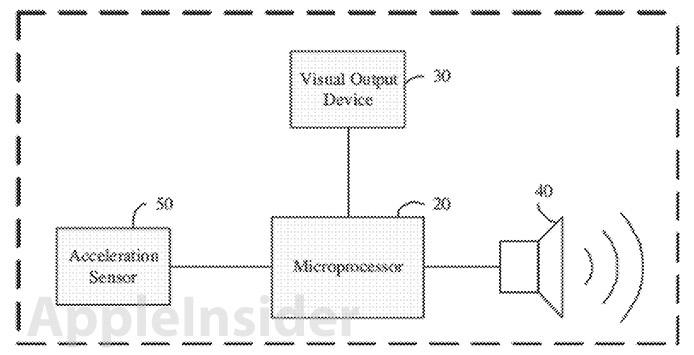A patent application discovered on Thursday for an accelerometer-based anti-theft system shows that Apple is actively researching ways to protect owners against having their expensive iDevices stolen.
Filed with the U.S. Patent and Trademark Office, Apple's patent application calls for the use of a portable device's accelerometer, in cooperation with a specialized controller, to detect whether a "theft condition is present" and sound an alarm. The system is slightly less involved than the security invention Apple filed for in mid-October, however the new patent application's reliance on an accelerometer to detect theft is a novel idea.
Integral to the invention's operation is the controller's analysis of signals generated by the movement of a device, which can determine whether the motion matches a set of parameters in which a theft scenario is likely. Just as important is the rejection of signal data for innocuous events.
From the filing:
In order to more accurately detect theft and to avoid "false alarms" such as the triggering of an alarm when no theft is actually occurring, the invention can include signal conditioning hardware and/or software for filtering out those acceleration signals that do not represent a theft condition. For example, the signal conditioning hardware and/or software should filter out those acceleration signals corresponding to shock or impact.
According to the application, theft conditions are likely to involve large-scale movements, like carrying the device in one's hand, which generate low frequency acceleration signals. Thus, by instituting a low pass filter that allows only those frequencies associated with probable theft scenarios, the risk of a false alarm is significantly reduced.
Signal filters and theft detection circuitry comprise the system controller.In addition, the system can be further refined by configuring the signal filter and corresponding circuitry to "detect certain acceleration frequency spectra characteristic of theft," while the controller is programmed to monitor for those specific profiles.
As for the alarm portion of the system, the invention calls for a graphical user interface that displays a "theft detection menu" which can be configured to select system sensitivity, audio alerts, volume and the time threshold at which an alarm sounds. Visual alerts are also supported, and can take the form of an on-screen message.
Anti-theft system's proposed GUI.If a theft condition is detected, the user has a set amount of time to enter a numeric or alphanumeric passcode to disarm the anti-theft system before the alarm sounds.
While the iPhone, iPod and iPad have integrated accelerometers, the separate controller and signal filters are missing from current hardware iterations, meaning the theft detection invention is most likely incompatible with existing products. Apple may one day choose to include the feature in an upcoming product, though no official announcement regarding such implementation has been released.
 Mikey Campbell
Mikey Campbell







-m.jpg)






 Christine McKee
Christine McKee
 Amber Neely
Amber Neely
 Andrew Orr
Andrew Orr

 Sponsored Content
Sponsored Content

 William Gallagher
William Gallagher









3 Comments
I really fail to see how this detects theft. Can you really detect that with motion?
I really fail to see how this detects theft. Can you really detect that with motion?
Of course not, but a lot of people here will believe it can.
[quote name="Russell" url="/t/153955/apple-continues-work-on-idevice-security-with-movement-based-theft-detection#post_2224913"][QUOTE name="astrubhar" url="/t/153955/apple-continues-work-on-idevice-security-with-movement-based-theft-detection#post_2224809"] I really fail to see how this detects theft. Can you really detect that with motion?[/QUOTE] Of course not, but a lot of people here will believe it can. [/quote]Since no one posted in this thread you must be right¡ They could also implement this tech into there products on display in stores.